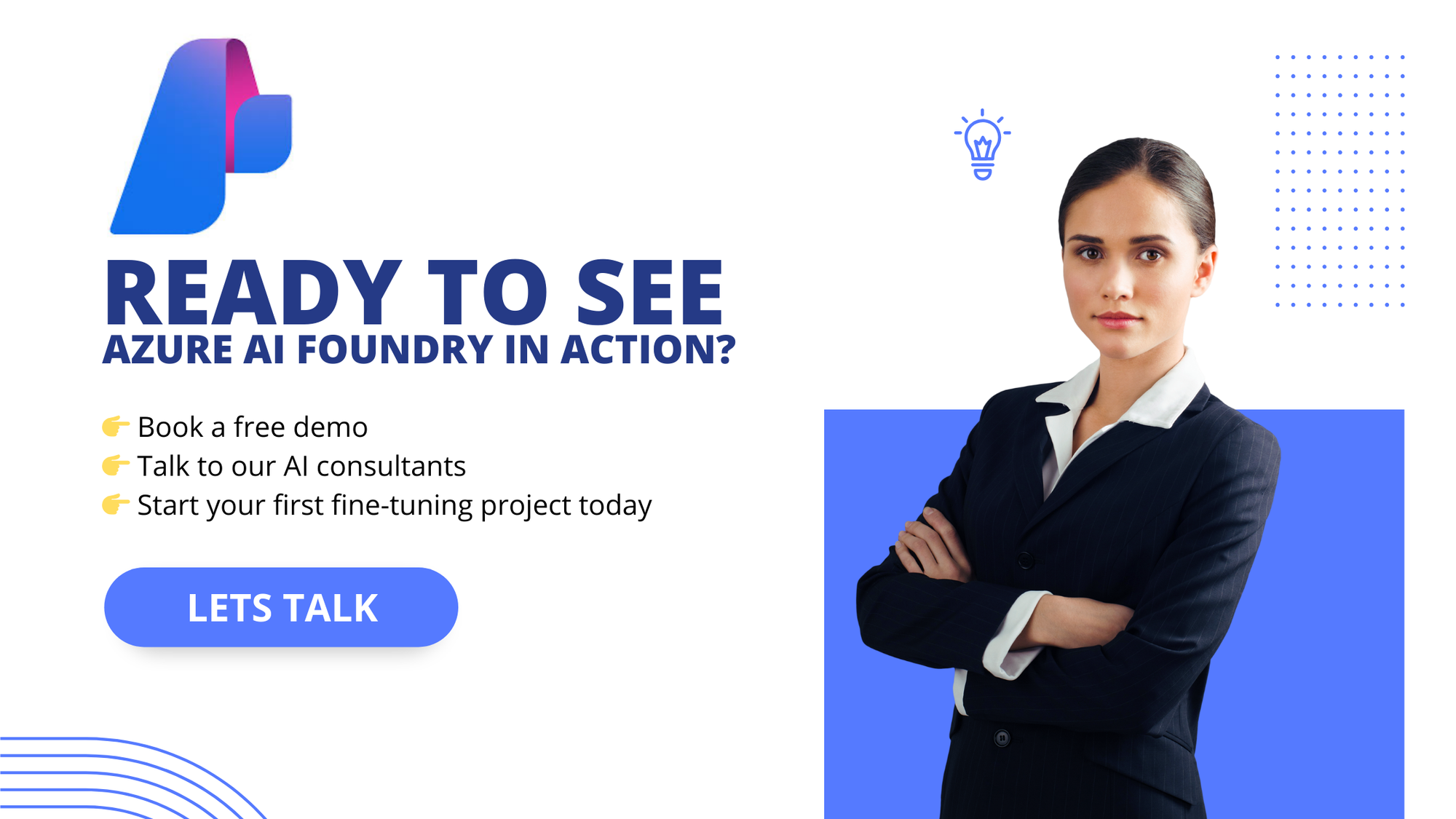Azure AI Foundry vs Open Source
When Should You Choose a Managed AI Platform?

In today’s AI-first world, every business wants to be an innovator. But before you fine-tune your first model or launch that customer-facing chatbot, you’re faced with a fundamental decision:
Do you use open-source tools to build from scratch or choose a managed AI platform like Azure AI Foundry?
It’s a classic trade-off—freedom vs. focus, flexibility vs. speed.
In this post, we analyse both sides, compare them in the most significant areas, and assist you in determining what best suits your business, team, and goals.
What Is Azure AI Foundry?
Think of Azure AI Foundry as your one-stop AI shop. Microsoft’s fully managed platform for building, fine-tuning, deploying, and scaling large language models (LLMs) like Llama 4, Phi, and Mistral—without the usual infrastructure headaches.
Instead of stitching together 10 different tools to get a model up and running, Azure AI Foundry lets you:
- Choose from pre-integrated foundation models
- Customize them with your data
- Deploy at scale with just a few clicks
- Monitor, manage, and secure everything in one place
The Azure ecosystem backs all of this, so you get native integrations with Azure Machine Learning, Prompt Flow, Responsible AI, and even Databricks.
Open Source: Total Freedom (With Strings Attached)
On the flip side, going open source gives you complete control. You pick your models (maybe via Hugging Face), run them locally or on the cloud, tweak every detail, and orchestrate your pipelines however you want.
Sounds great, right? And it is—for the right team.
With open source, you’ll likely be working with:
- Transformers and Diffusers from HuggingFace
- Model runtimes like Ollama, vLLM, or ONNX
- Orchestration tools like LangChain or Haystack
- Infrastructure via Docker, Kubernetes, or custom cloud setups
But here’s the catch: you own the ops—and that means DevOps, MLOps, security, scaling, and governance are all on you.
It’s like buying a car in parts—you might love the custom build, but you’d better be ready with a wrench and a workshop.
Side-by-Side: Azure AI Foundry vs. Open Source

When Azure AI Foundry is the Right Choice
Let’s be honest—most companies don’t want to reinvent the AI wheel. They want results. Fast.
You should go with Azure AI Foundry if:
- You’re short on infra/MLOps talent
- You need to deploy quickly and securely
- You work in regulated industries (finance, healthcare, etc.)
- You need model versioning, rollback, and audit trails
- You want to focus on use cases, not maintenance
And the bonus? Microsoft keeps adding state-of-the-art models as they’re released, so you’re never stuck in the past.
When Open Source Might Be a Better Fit
On the flip side, open source is ideal if:
- You’re experimenting with bleeding-edge research
- You need 100% control over data and models
- You’re deploying in air-gapped or edge environments
- You’ve already got a mature in-house MLOps team
- You’re OK with building (and maintaining) your stack from scratch

Why Not Both? The Hybrid Approach
Here’s a smart middle path we see emerging:
- Experiment & prototype locally using open tools (Ollama, LangChain, etc.)
- Scale & serve on Azure AI Foundry once you’re ready for production
This gives you the best of both worlds: flexibility in R&D and stability of output.
Common Misconceptions About Open Source AI
Let’s clear the air. Here are a few myths many organizations still believe:
- “Open source is free.”
Although it may not cost money upfront, long-term DevOps, MLOps, infra management, and patching can cost more than a managed solution. - “Vendor lock-in is bad.”
Not always. If Azure helps you launch faster, ensures security, and cuts time-to-market in half, the ROI often outweighs the fear of lock-in. - “We’ll lose control with Azure.”
Azure lets you bring your data, manage access, customize fine-tuning, and fully govern your models—without building everything from scratch.
These myths can slow adoption and innovation. The reality is that it’s about picking the path that brings the most value to your team.
Expert Take: What the Industry is Saying
Honest feedback from real users can say more than a feature list ever could:
“Azure AI Foundry is how we scaled our GenAI experiments from weeks to days — it gives us velocity with governance.”
— CIO, Mid-size Healthcare Provider
Microsoft has also been making waves with Azure AI Foundry’s integration with LLaMA 4, custom fine-tuning, and complete enterprise support, which have been highlighted in recent industry reports from Gartner, TechCrunch, and Microsoft Build 2025.
Final Thoughts: It’s Not Just About Tech—It’s About Time-to-Value
The question isn’t “Which is more powerful?”—both platforms are competent.
The real question is: How fast can you go from concept to impact?
If you’re running a business, trying to serve customers, or training internal teams, the time (and cost) saved with a managed platform like Azure AI Foundry can far outweigh the control open source gives.
Choose what helps you build faster, deploy smarter, and scale confidently.


